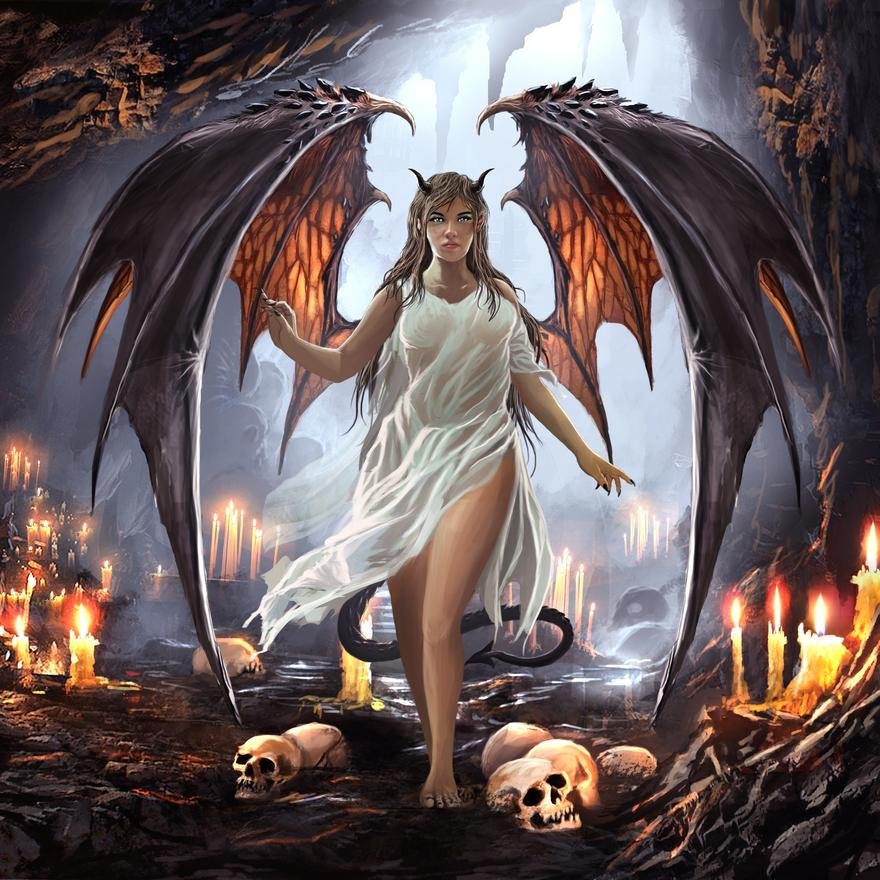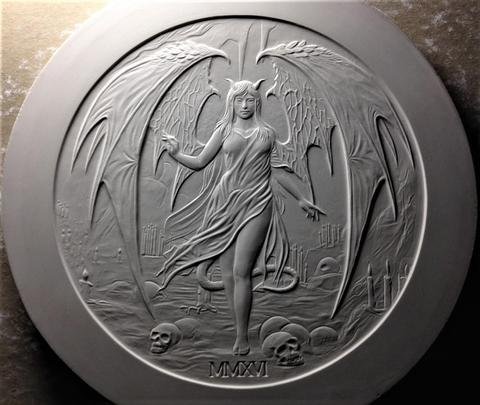

This is the original art we used for our 2016 Temptation of the Succubus Round. Of course you need the idea before the art. The art submission used mostly just needs to be high quality, full colour of black and white doesn't really matter. Of course if your working with a square art file you need to take into account the coin in round, so you'll either need to shrink the image or try to make sure it respects circle dimensions. It's quick to double check by just putting it in a circle or creating the art within a circle.

This is the second step and by far the longest step in the entire coin making process. A plaster is carved by hand by a master sculptor. They use what is called a Bas-Relief style of sculpting. I'm no expect, but Merriam-Webster describes it like this;
relief in which the projection from the surrounding surface is slight and no part of the modeled form is undercut
Here's a step by step video from the super amazing Heidi Wastweet who does many amazing sculptures used on coin dies.
Here is also a photo of our plaster molds that were created for our coin dies.

You may notice, that there are slight changes from the original art and that is simply because it is the sculptors interpretation of the art, he has to recreate it and add the relief and textures to the project. They also have a thorough understanding of how the textures and relief will replicate and work on a finished coin.
Our plaster was created by Luigi Badia, the sculpter our minting team works with. You can read a bit more about him in this article HERE.
Step 3- Creating an Epoxy
This step is pretty straight forward, an impression of the plaster mold is taken in a resin epoxy, that will harden much stronger and more durable then the plaster will. This will be then used as the template for the pantograph machine described in this post HERE. You can see an example here from the last post, unfortunately we don't have a photo of our epoxy.
Comments will be approved before showing up.